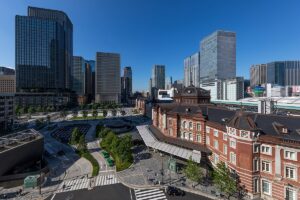Overview (history, characteristics, attractions)
Shibamata Taishakuten (officially Daikyoji Temple) is a historic temple located in Shibamata, Katsushika Ward, Tokyo. It's a popular tourist spot where you can enjoy the traditional downtown atmosphere along with the charming shopping street that runs along the approach to the temple. A historic temple dating back to the Edo period, the main hall, temple gate, and the wooden carvings and Buddhist statues on the grounds are noteworthy. It's also beloved as the setting for the iconic Showa-era film series "Otoko wa Tsurai yo," and is popular with film fans and families alike, thanks to its bronze statue of the protagonist, Tora-san, and the many souvenir shops related to him. The temple's charm lies in the nostalgic atmosphere of the approach to the temple, the seasonal flowers and events, and the opportunity to enjoy a stroll along the river.
Highlights
– Sculptures and interior decorations of the Taishakudo (main hall): The highlight is the exquisite wood carvings, Buddha statues, and stunning decorations of Buddhist art. Please follow the signs as there are areas inside the hall where photography is prohibited.
– Shibamata Taishakuten Sando (Shopping Street): Enjoy shopping and eating at Japanese sweet shops, tsukudani (food preserved in soy sauce), and souvenir shops. The old buildings and signs create a charming atmosphere.
– Tora-san Statue and Tora-san Memorial Museum: You can see the statue of Tora-san, the main character of the film "Otoko wa Tsurai yo," as well as the memorial museum (Tora-san Memorial Museum) which has exhibits related to the film. A must-see for film fans.
- Edogawa Riverside scenery and riverside strolls: The banks of the Edogawa River near Taishakuten Temple are perfect for strolling, and you can enjoy seasonal scenery (cherry blossoms, fresh greenery in early summer, and autumn leaves).
- Traditional events and festivals: There are annual events such as Setsubun and New Year's visits to the shrine, and the shrine is bustling with many visitors.
Access (nearest station, transportation, etc.)
- Nearest station: Get off at Shibamata Station on the Keisei Electric Railway. It is about a 5-minute walk to the entrance to the shrine and Taishakuten Temple.
- By JR: Approximately 15-20 minutes on foot from Kanamachi Station on the JR Joban Line, or a few minutes by bus or taxi.
- Bus/Car: Local buses are available, but the surrounding roads are narrow and parking is limited, so we recommend using public transportation.
– From the city center: You will often need to transfer from major stations, so please check connections on the Keisei Line or JR (travel times may be longer during peak hours).
Estimated stay (estimated time required)
- Quick visit + stroll along the approach: 30 minutes to 1 hour
– Temple visit + Tora-san Museum, meals and shopping included: 1.5 to 3 hours
– If you want to take a leisurely stroll around the area and go all the way to the riverside: Allow about half a day.
Nearby spots
– Shibamata Taishakuten Sando (Shopping Street): A concentration of souvenir shops and restaurants.
– Tora-san Memorial Museum (Katsushika Shibamata Tora-san Memorial Museum): Movie-related exhibits.
– Yagiri-no-Watashi (Edogawa Ferry): Experience crossing to the other side on a traditional ferry (operating days and times vary depending on the season).
– Edogawa Riverbank and Park: A great place for strolling and picnics.
- Nearby temples, shrines, and downtown walking spots: We also recommend touring other historical sites and shopping streets in Katsushika Ward.
Things to be aware of (crowding, etiquette, seasonal precautions, etc.)
- Crowds: The shrine is extremely crowded on weekends, public holidays, and on special days such as New Year's visits and Setsubun. Please allow plenty of time for worship and photography, so please visit with plenty of time.
- Manners: Please remain quiet within the temple grounds and observe proper etiquette (washing your hands, bowing twice, clapping twice, bowing once, etc.). Photography may be prohibited inside some halls and temples, so please follow the signs.
- Passing: The approach to the shrine is narrow and busy, so please be careful when handling strollers and large luggage. Smoking and littering on the street are strictly prohibited as they cause inconvenience to others.
- Opening hours and closing times: Most shops along the approach to the shrine close in the evening, so be sure to go shopping or eat early.
- Seasonal precautions: Take precautions against the sun and heat in summer and the cold in winter. The cherry blossom season in spring and the autumn foliage season are beautiful, but the number of tourists also increases. Outdoor activities such as the Yagiri Ferry crossing are subject to the weather.
- By car: There are few parking spaces and they tend to fill up on weekends, so we recommend using public transportation.
Please use the above information to plan your visit and stroll around the temple. For peak periods and days when special events are held, it is a good idea to check the latest information on official guides and notices posted on-site.


